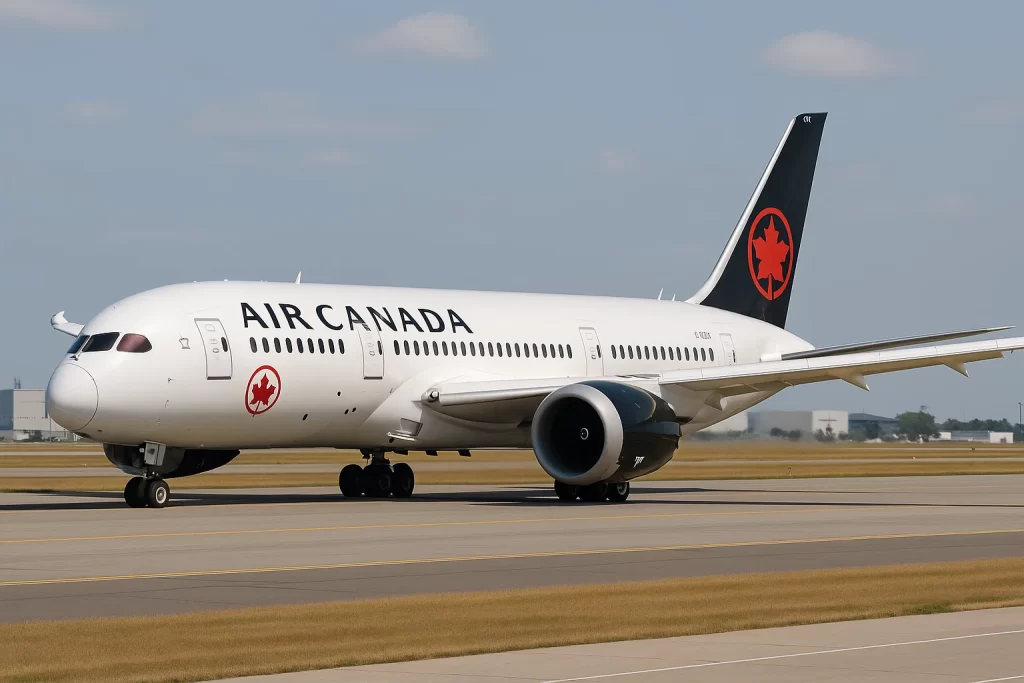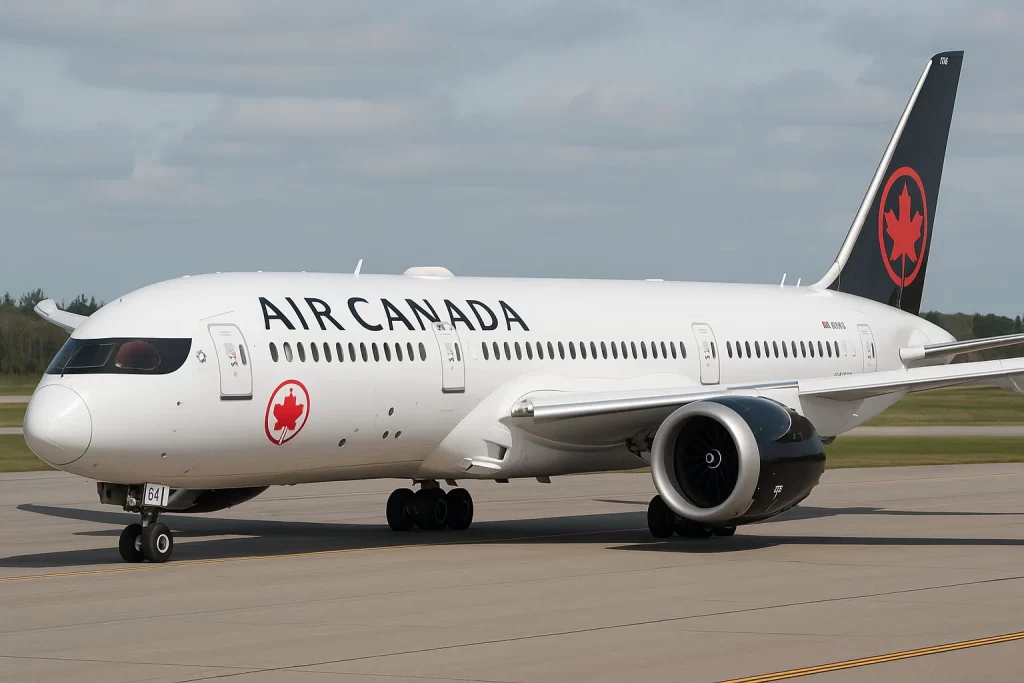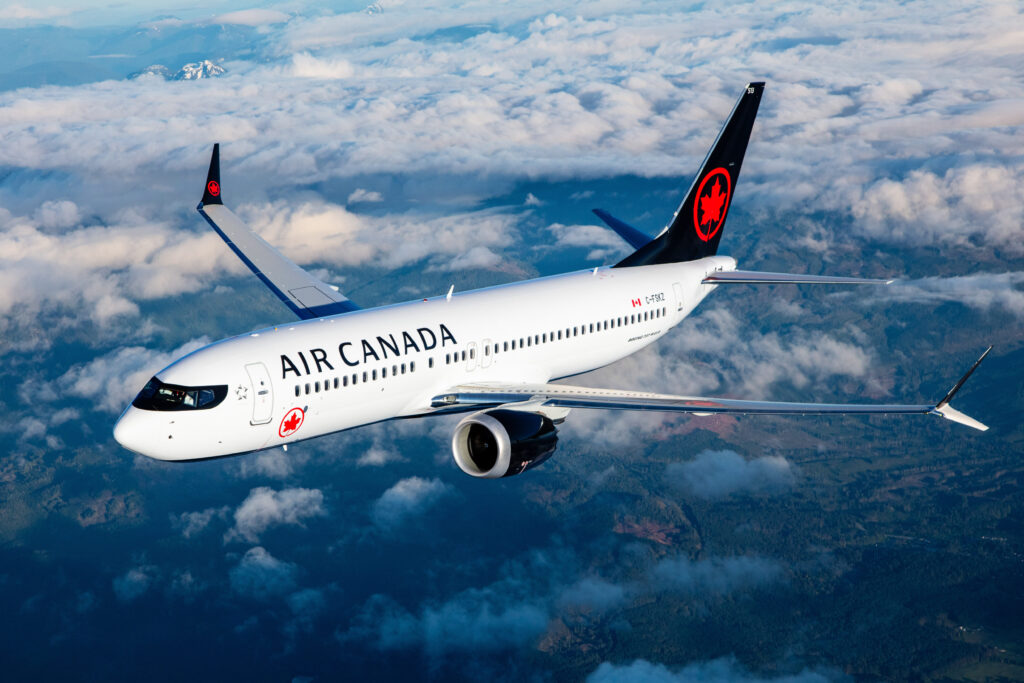Air Canada is once again making bold moves in the North American aviation market, with a carefully measured expansion strategy that will see three new US routes added to its portfolio in May 2026. These flights are designed to strengthen the airline’s cross-border presence while maintaining a disciplined approach to growth. The announcement marks another step in Air Canada’s effort to balance demand-driven capacity with its long-term strategy of connecting key Canadian hubs to strategic American cities.
With its new services linking Toronto to San Antonio and Montreal to both Cleveland and Columbus, Air Canada is targeting a blend of leisure and corporate travelers while simultaneously expanding its transborder connectivity. These routes might not seem like massive launches at first glance, but they reflect a calculated move to meet passenger demand, strengthen hub banks, and provide valuable feeder traffic into the airline’s extensive international network.
Breaking Down the New Routes
Beginning May 1, 2026, Air Canada will officially begin operating flights along three new spokes of its US-based route network. The first is a thrice-weekly service from Toronto Pearson International Airport (YYZ) to San Antonio International Airport (SAT). This route is particularly noteworthy because it introduces a new Texas destination into the airline’s system. The service will be operated using the Airbus A220, a modern and fuel-efficient narrowbody aircraft that offers a comfortable experience for both business and leisure travelers. With roughly 137 seats available per flight, this connection is geared toward a medium-demand market that combines a strong leisure base with some business traffic.
On the other side of the expansion, Air Canada is turning its focus toward Ohio. Daily flights from Montréal–Trudeau International Airport (YUL) to both Cleveland Hopkins International Airport (CLE) and John Glenn Columbus International Airport (CMH) are set to begin on the same date. These routes will be flown by the Embraer E175, which seats about 76 passengers. By deploying this modest-gauge regional jet, Air Canada can effectively balance cost efficiency with market demand, allowing it to serve corporate travelers while maintaining steady capacity levels.
Together, these three new routes add approximately 1,475 weekly seats into Air Canada’s cross-border network. Importantly, they do not represent aggressive capacity dumps into saturated markets. Instead, they represent a measured expansion into areas where Air Canada sees opportunity without overextending its resources.
Why These Routes Matter

The significance of these new US flights lies in their ability to diversify Air Canada’s portfolio while aligning with its broader connectivity goals. Each of the chosen markets plays a different role in the airline’s network. San Antonio provides an entry into southern US leisure traffic while simultaneously offering connections for Canadian business travelers heading into Texas. Meanwhile, Cleveland and Columbus extend Montreal’s reach into two cities that hold corporate demand potential, while also providing visiting-friends-and-relatives (VFR) traffic opportunities.
The schedule design is also intentional. Air Canada has structured these flights to connect smoothly into its Toronto and Montreal banks, which feed transatlantic flights to Europe and transcontinental services across Canada. This allows passengers from Ohio or Texas to easily connect onward to global destinations with minimal layover times, enhancing convenience and strengthening Air Canada’s competitive edge against US carriers.
For corporate travelers in particular, these daily Ohio routes are appealing because they provide reliable premium cabin options while being integrated into a large international hub. For leisure passengers, the Toronto–San Antonio connection opens a seamless travel pathway to one of Texas’s most culturally rich and historic cities.
Balancing Growth with Discipline
What makes Air Canada’s May 2026 expansion noteworthy is its emphasis on disciplined growth. In recent years, the airline has become increasingly strategic in how it adds new routes. Rather than chasing capacity for the sake of growth, it has instead focused on measured investments that target specific demand pools. This approach minimizes risk while still allowing the carrier to test the viability of new markets.
By selecting the Airbus A220 and the Embraer E175 for these new US flights, Air Canada is ensuring that its cost per available seat mile (CASM) remains competitive. Both aircraft are right-sized for long-and-thin routes that require efficiency without compromising on passenger experience. The A220 in particular has become a cornerstone of Air Canada’s fleet strategy, offering a perfect balance of range, comfort, and fuel efficiency.
This decision to utilize smaller but efficient aircraft shows Air Canada’s awareness of the seasonality and volatility in medium-demand markets. Rather than flooding the market with excessive capacity, the airline is carefully tailoring its supply to actual demand, a strategy that not only protects yields but also enhances sustainability in route planning.
Impact on the US-Canada Travel Market

For travelers, the addition of these three new US flights means more options, greater connectivity, and smoother journeys between Canada and the United States. Air Canada is positioning itself as the carrier of choice for cross-border travelers who value both convenience and international reach. By offering links into secondary markets like Cleveland and Columbus, the airline is not just serving point-to-point demand but also creating feeder traffic into its wider global network.
This expansion also reinforces Air Canada’s role as a legacy carrier with the resources and network to compete effectively in the transborder space. Few airlines can afford to launch new US services with the confidence and discipline that Air Canada has displayed. This move underscores the carrier’s long-term commitment to providing Canadians and Americans with reliable connections that feed into a global system spanning Europe, Asia, and beyond.
Additionally, the routes enhance Air Canada’s competitiveness against US legacy carriers such as United, Delta, and American Airlines, all of which have their own strong cross-border presences. By anchoring these new flights in hubs like Toronto and Montreal, Air Canada leverages its connectivity advantage to draw in both leisure and premium travelers.
Looking Ahead: The Future of Air Canada’s Network Strategy
Air Canada’s three new US flights in May 2026 might seem modest in scale, but they represent an important step in the airline’s broader vision. As the aviation industry continues to rebound and reshape itself after years of global disruptions, measured expansions like these provide a roadmap for sustainable growth.
The key risk factors will revolve around corporate demand in Ohio, the seasonality of leisure traffic to San Antonio, and competitive responses from rival carriers. However, Air Canada’s cautious deployment of capacity, coupled with its strong hub connectivity, gives it a solid foundation for success.
As the airline continues to strengthen its cross-border network, passengers can expect more seamless travel experiences, a greater array of options, and the reassurance that Air Canada remains committed to being a top-tier global connector. For travelers flying between the US and Canada, these expansions are good news, offering fresh opportunities for both business and leisure journeys.
Conclusion
Air Canada’s May 2026 launch of three new US routes—to San Antonio, Cleveland, and Columbus—is more than just an expansion of its route map. It is a strategic step that demonstrates the airline’s disciplined approach to growth, its commitment to serving both leisure and corporate markets, and its continued role as a leader in cross-border aviation.
By leveraging efficient aircraft like the Airbus A220 and Embraer E175, aligning schedules with international flight banks, and carefully targeting markets with balanced demand, Air Canada is ensuring these new routes add real value to its network. For travelers, this means greater connectivity, more flexibility, and stronger links between Canada and the United States.
With these three new US flights, Air Canada isn’t just adding destinations—it’s reinforcing its position as a carrier that knows how to grow smartly, serve strategically, and connect seamlessly.

